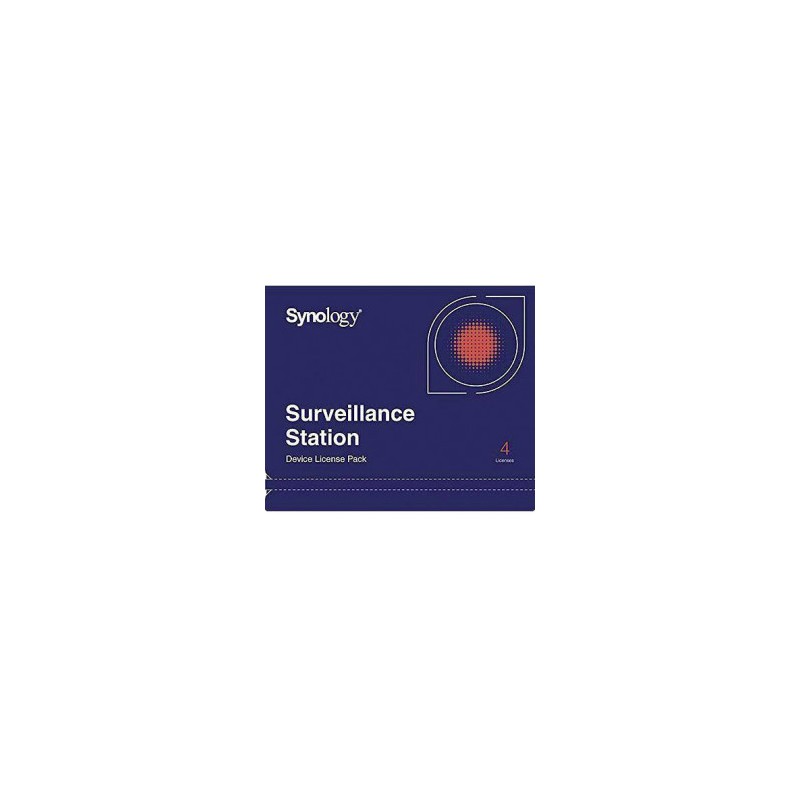
- #Synology surveillance station license overview how to#
- #Synology surveillance station license overview install#
- #Synology surveillance station license overview free#
Synology provides NAS devices with 2, 4, 5, 6, 8, 10, 12, 16, and 24 bays for disks. There is no reason to buy NAS with less than two bays for disks. Note: It is recommended that you use all disks with the 4-KB sector size (Advanced format) or all disks with the 512-B sector size in the same array.īays are slots that are present in a chassis of a NAS device and are intended to have disks installed into them. Sometimes the maximum volume size can be increased from 108 TB to 200 TB after upgrading memory to 32 GB. Some NAS models support the 200-TB maximum size for a volume. Be aware that the limit for a single volume size for 32-bit processors is 16 TB and for 64-bit processors is 108 TB for Synology NAS models. Note: Check on the official web site of Synology to verify the maximum supported size of a disk for the NAS model you want to buy.

All these parameters should be considered together.

Before choosing a NAS model, you should plan the maximum storage capacity you need used on NAS, whether to use RAID or not, and the maximum number of disks that can be installed into the NAS device, as well as the possibility of a disk hot swap.
#Synology surveillance station license overview install#
At present, the maximum capacity of hard disks you can install into Synology NAS devices is 16 TB. Vendors that sell NAS devices with preinstalled disks usually have an artificial, contrived limit on the list of disk models that can be installed on NAS. This is not a disadvantage – you can buy any needed hard disk drives (HDD) or solid state drives (SSD) with the necessary characteristics and install them into your Synology NAS device consider it as freedom of choice. Synology NAS devices are produced without disk drives. Synology NAS can be used to store backups as well as for creating a dedicated backup appliance. Home users can store photo, video, audio and other types of media content on NAS and access that content from different devices connected to the home network. NAS can be used as a file server to allow users to edit files and store them on a NAS device which is most optimal for small organizations. The first and most prevalent use case of NAS is storing data that must be accessible via network. Let’s explain features and capabilities that are available for Synology NAS devices as well as possible use cases. What CPU and memory configuration is required? (This is dependent on used features).What features do you need? Do you need video transcoding, installing additional applications etc.?.How much storage space do you need? Do you need redundancy? Do you want to use RAID?.

General Synology NAS Features and Capabilitiesīefore choosing one or another model of Synology NAS you should answer the following questions:
#Synology surveillance station license overview how to#
Moreover, today's blog post discusses the main Synology NAS features and capabilities, the common criteria for model classification, and how to use Synology NAS as a reliable and secure Backup Appliance (with NAKIVO Backup & Replication). The blog post includes an overview of the following Synology NAS devices: Today’s blog post is intended to help you select NAS that can better fit your needs among NAS devices produced by Synology. Selecting the proper NAS device can be a confusing and difficult task for new users faced with the choice of NAS for the first time. Synology is a leader in producing NAS devices and provides a wide range of NAS models. Moreover, NAS devices can be used not only for extending storage capacity, but also for backing up data, and as a media server for storing and playing multimedia content.
#Synology surveillance station license overview free#
When there is no free space left in the chassis of your server to install hard disk drives, yet you still require more storage capacity, a good idea is to consider using NAS (network attached storage) devices. By Michael Bose Synology NAS Devices: Which One to Choose?


 0 kommentar(er)
0 kommentar(er)
